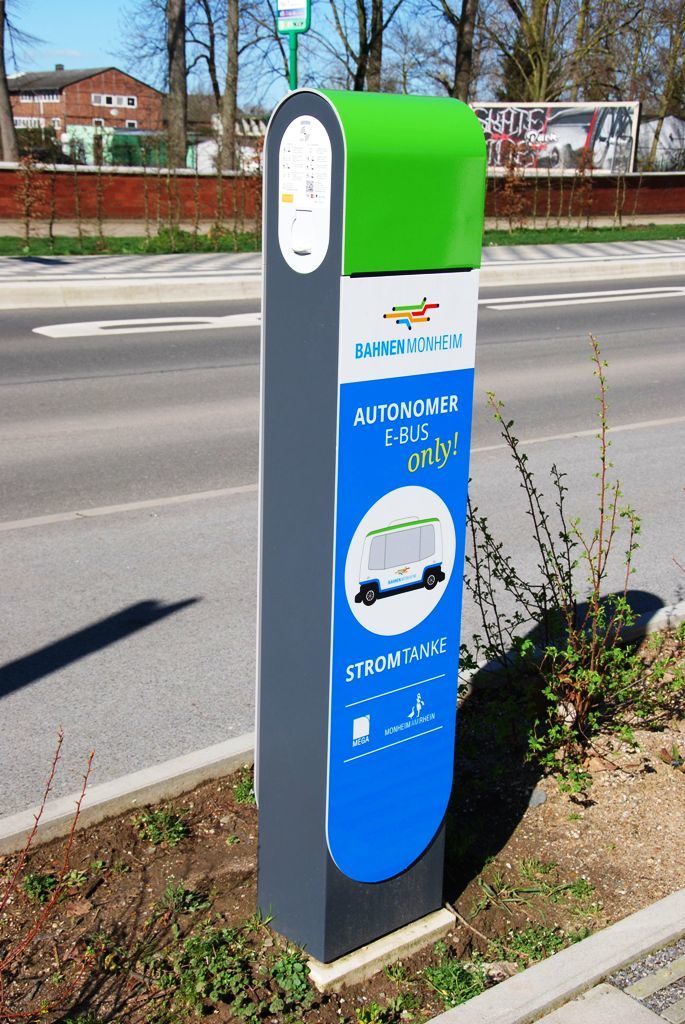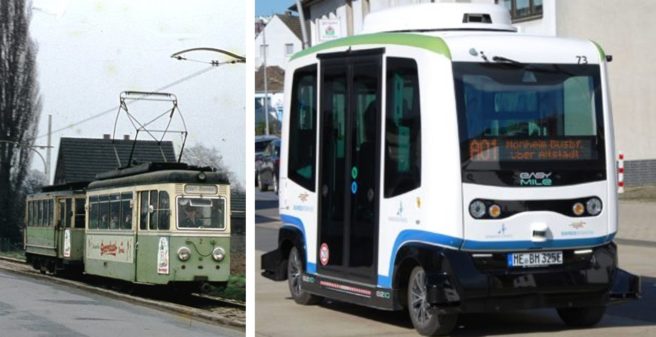
The city of Monheim is located on the right bank of the Rhine, between Cologne, Leverkusen and Düsseldorf, and has some 50,000 inhabitants. Thanks to a large chemical company it is being considered as one of the richest municipalities in North Rhine-Westphalia. It is also the home of the well-known writer Ulla Hahn, in whose books Monheim (“renamed” on Dondorf) plays a major role.
The history of public transport in Monheim
Local public transport has existed in Monheim for more than 100 years. Because of its location some kilometers away from the next railway station, a “trackless railway” started operation – a very early form of trolleybus operation with very basic vehicles. There were two trolleybuses and two trailers.
Monheim’s “Gleislose Bahn” was not the only one in Germany, but there were not many of these new systems. Another example may be the “Gleislose Bahn” in the Ahr Valley, which connected the then neighbouring towns of Bad Neuenahr and Ahrweiler (today merged into the town with the name “Bad Neuenahr-Ahrweiler”).
The “trackless tracks” were not really successful and consequently they disappeared very quickly – none of them experienced ten years of operation. In Monheim it only lasted from 1904 to 1908.
In 1908, in replacement of the “trolleybus operation” between Monheim and Langenfeld, the RWE Group opened an electric light rail that ran from Langenfeld via Monheim to the present-day Monheim district of Baumberg and the Leverkusen district of Hitdorf. Here, not only freight trains but also – with real tram vehicles – “passenger trains” were in operation along the two lines. Both routes ran together from Langenfeld to Monheim, divided at the “Dreieck” (“Triangle”) and then reached their termini in Baumberg and Hitdorf (later extended to Rheindorf).

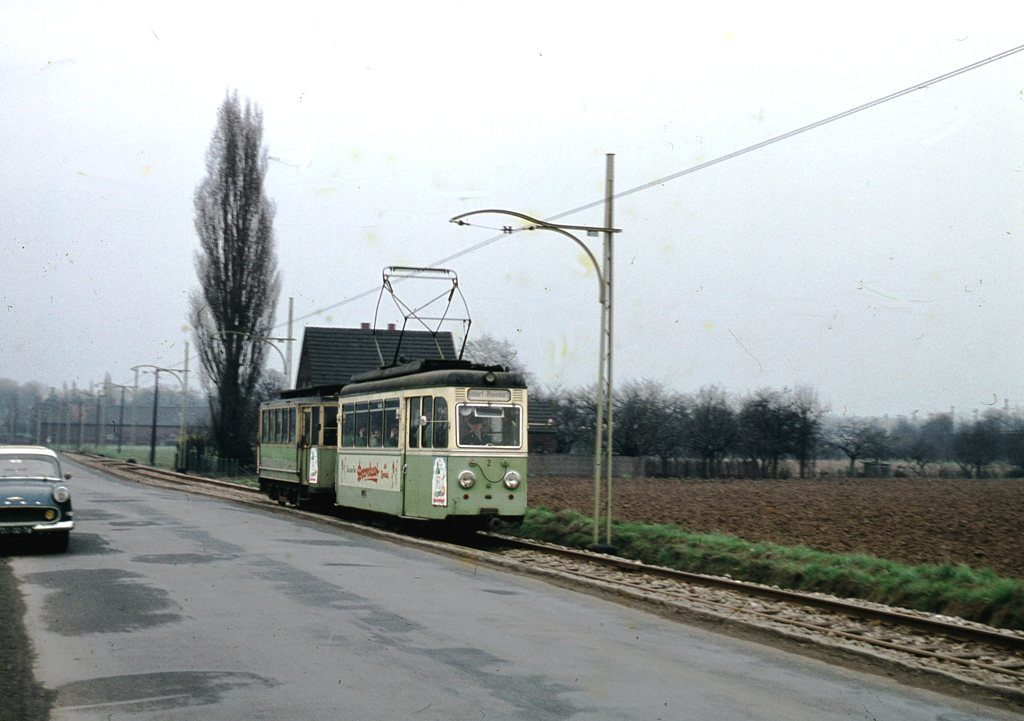
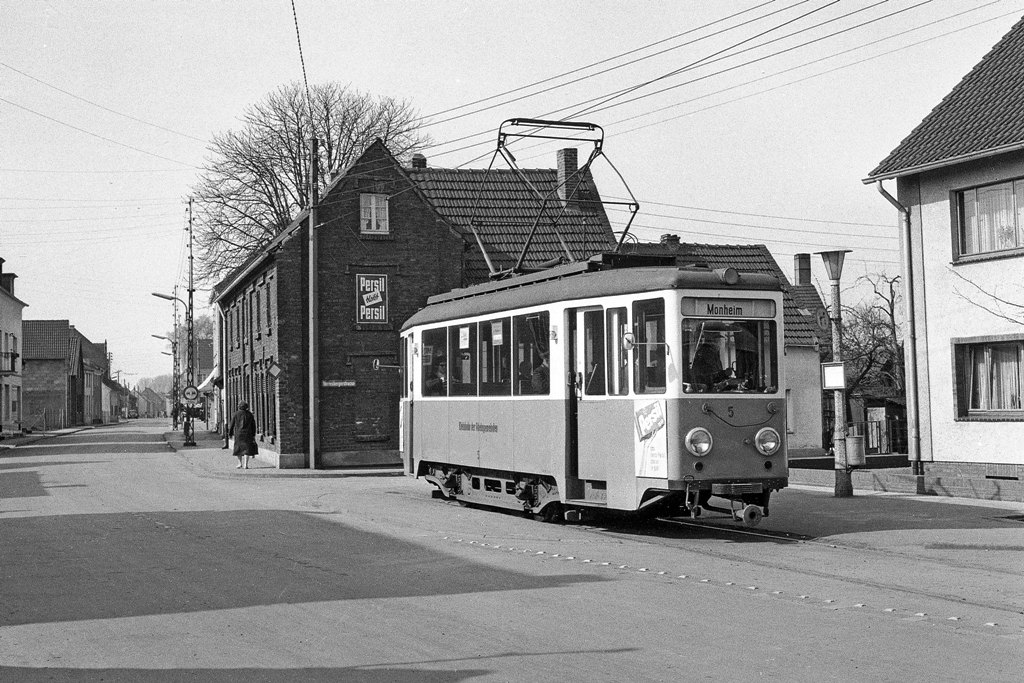
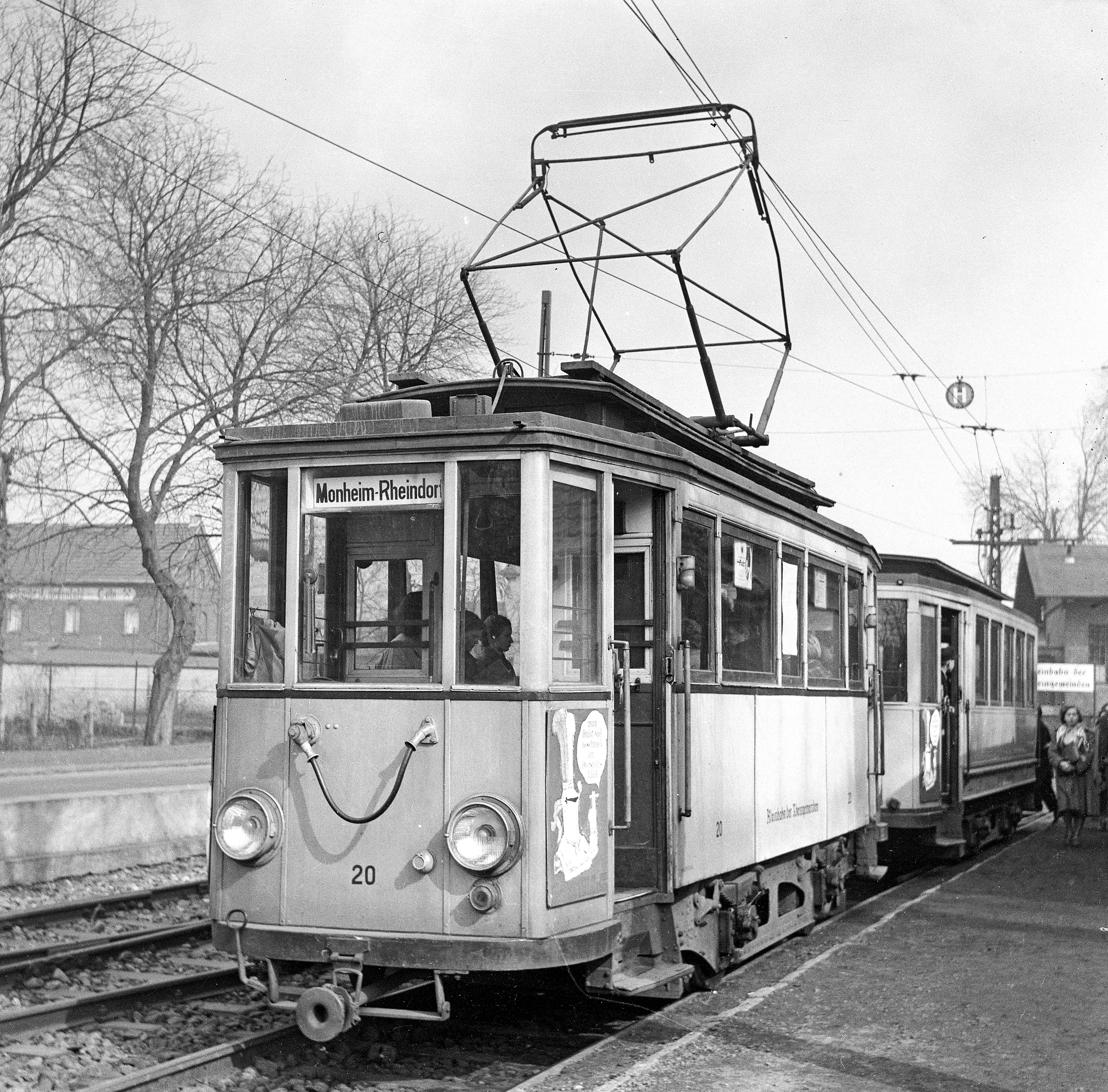

1963: buses only
In 1963, passenger transport by rail came to an end. At the same time, the “Bahnen der Stadt Monheim” (BSM – Railways of the City of Monheim) founded a bus company, which since then has been solely responsible for the transport of passengers. In 1963, five Büssing Senator 13 and five second-hand buses were in service. The fleet today includes 50 buses: 8 articulated buses, 37 twelve-meter buses – and five autonomous minibuses.
In the centre of Monheim, a bus station was located at the “Triangle” as the central point in the network.
With regard to freight transport by rail, nothing has really changed with the exception that “Bahnen der Stadt Monheim” today is only the owner of the infrastructure (since 2014) but no longer the operator of it. Their own two diesel locomotives “Max” and “Moritz” were sold.
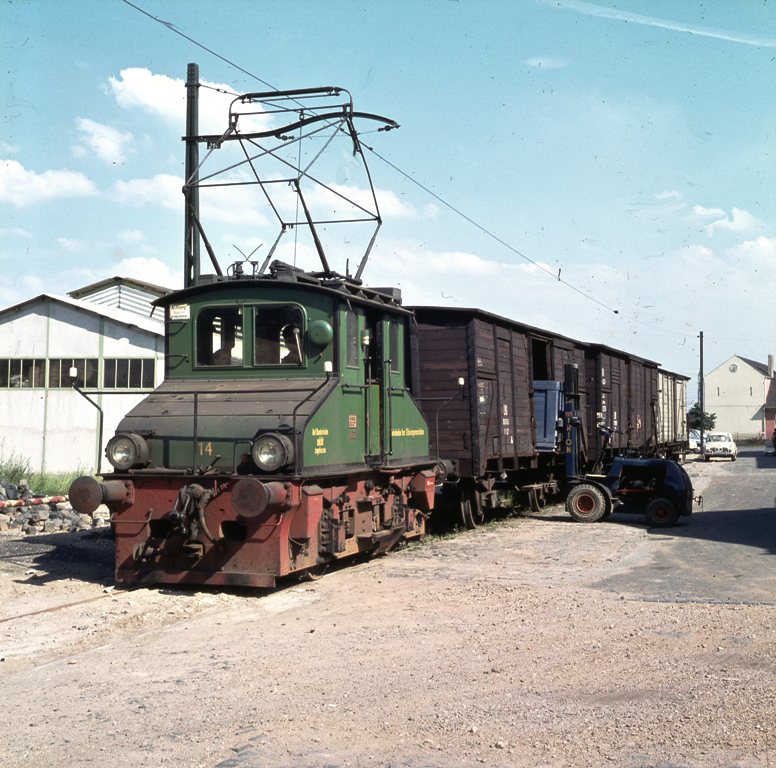
Today, the BSM is a pure bus operator. However, the old-established name “Bahnen der Stadt Monheim” has remained untouched, although today the abbreviation “BahnenMonheim” is also used.
26 February 2020: Concession for line “A 01” with autonomous minibuses
On 26 February, the BSM was granted the concession for a minibus line starting from the bus station to the old town center, which runs exclusively on public roads. BSM Managing Director Hövermann states: “This is a temporary and also limited concession. A concession not only gives you the right of carriage, but also the obligation to transport. The limited concession allows us to cancel trips without notice. After all, the technical system of the autonomous bus is completely new to us.”
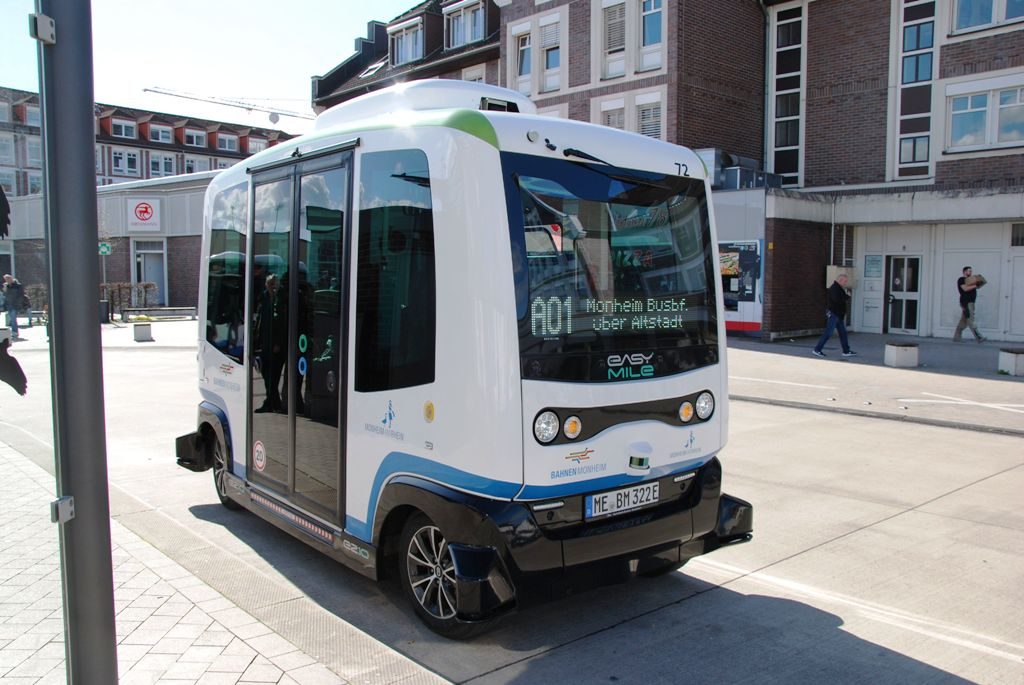
Line “A 01” starts at the Monheim bus station. Via Baumberger Straße it reaches Kirchstraße and continues to the “Evangelische Kirche” stop. Here it turns into the old town, passes Monheim’s landmark, the “Schelmenturm”, and finally reaches the stop “Altstadt” on the banks of the Rhine in a loop ride. From there it continues through the old town and via Kirch- und Baumberger Straße back to the bus station.
Five autonomous minibuses of the type “EZ 10” from the French manufacturer EasyMile (BSM-Wagen 72 to 76) are being used. Operations manager Michael Hamann: “We can only operate the line with minibuses. There are places on the route where a full-scale bus simply would be too large.” The vehicles can accommodate 11 passengers. And yet the bus has to be driven with a so-called “operator”, who is explicitely NOT a “driver”, because the buses actually drive on their own. The operator on board is still necessary by German law and he/she also takes care that everything runs smoothly. In case of an obstacle on the way – for example, a car that is parked incorrectly – the operator turns off the automatic mode and uses a console to control the vehicle manually. This is even necessary with the EZ10 just running at a maximum speed of 5 km/h in this form of operation.
EasyMile emphasizes that the EZ 10 could get to a Vmax of 40 km/h in the future. But regulators are still cautious. So far, they have only allowed the small EZ 10 in Monheim a top speed of 16 km/h. But this is not really a problem in Monheim, because most of the roads have speed limit of 20 km/h to 30 km/h anyway – although in practice this is not respected by most of the car drivers. Hamann: “The only road users who travel at the correct speed on these roads are our autonomous minibuses. Everyone else is driving too fast.”
Line “A 01” runs every 15 minutes seven days a week. A round trip from the bus station takes 30 minutes, so three minibuses on the line are needed, including break time. The other two stand at the old town stop on for recharging the batteries.
Parking at the old town stop
The five EasyMile EZ 10s are not based at BSM’s normal bus depot. Instead, they use regualrparking spaces in a normal parking lot at the old town terminus, where their recharging columns are located. Managing Director Hövermann: “Of course, it is not ideal that the vehicles are standing outside of our premises. That’s why we want to build a garage there for our five minibuses.”
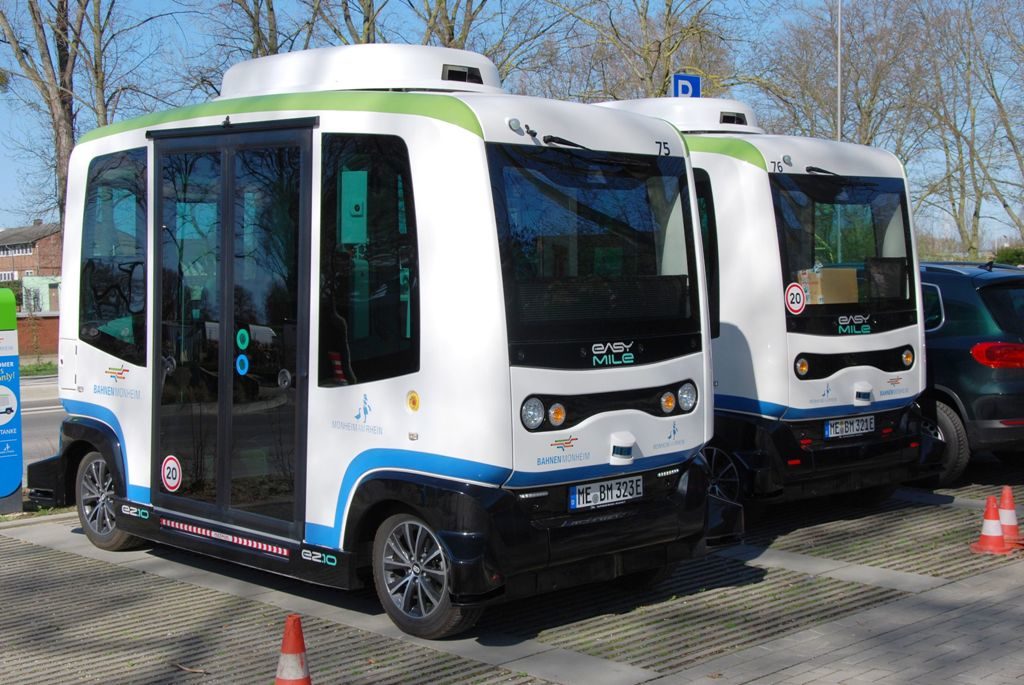
The “test drive”
Of course, the author wanted to know how it feels like to be a passenger on an autonomous EZ 10 minibus. He drove from the old town to the bus station, informed himself onhow the minibuses are actually operated and then returned to the old town. The conclusion: the minbuses drive very quietly. Passengers are supposed to buckle up because of possible emergency brakes, but this did not happen during the “test ride”. Both vehicles did not brake differently from other buses. This very smooth ride differed significantly from an autonomous minibus, which the author tested in Luxembourg in January 2019.
It is noteworthy that the small EZ 10, once it comes to a complete stop cannot start again on its own. That’s why the “operator” is still needed: he/she has to judge by him-/herself whether the route is free or not. If so, the bus getsa departure order via a display instrcution. The little EZ10 acknowledges then with a bell tone as well as with a parallel message to the surroundings: “I’m going now.”
.
Conclusion of the test drive: the small EasyMile EZ 10 does perfectly what it is supposed to do and it is well capable to provide the services as expected. The outlook is promising.
Managing Director Hövermann reported that after the short time since 26 February, about 240 passengers travel daily on line “A 01”. Without having to pay anything for it: on line “A 01” the zero tariff applies.
Specifications for EasyMile EZ 10
Length: 4.020 mm
Width: 1.998 mm
Height: 2.871 mm
1 “Operator” (necessary for now)
Total capacity: 11 passengerse – 6 seats (3 each behind the front and front window), 5 standing places
Battery capacity: 32 kWh
Duration of use (before reloading): 7 to 9 operating hours, under special favourable circumstances – for example, neither heating nor air conditioning required) up to 15 hours
Kerb weight: 2,030 kg
Ab. Total weight: 3,030 kg (i.e. one tonne payload)
Sources: Stefan Kunig / Gunter Mackinger: Die Bahnen der Stadt Monheim, Verlag Kenning, Nordhorn 2008
19.03.2020

